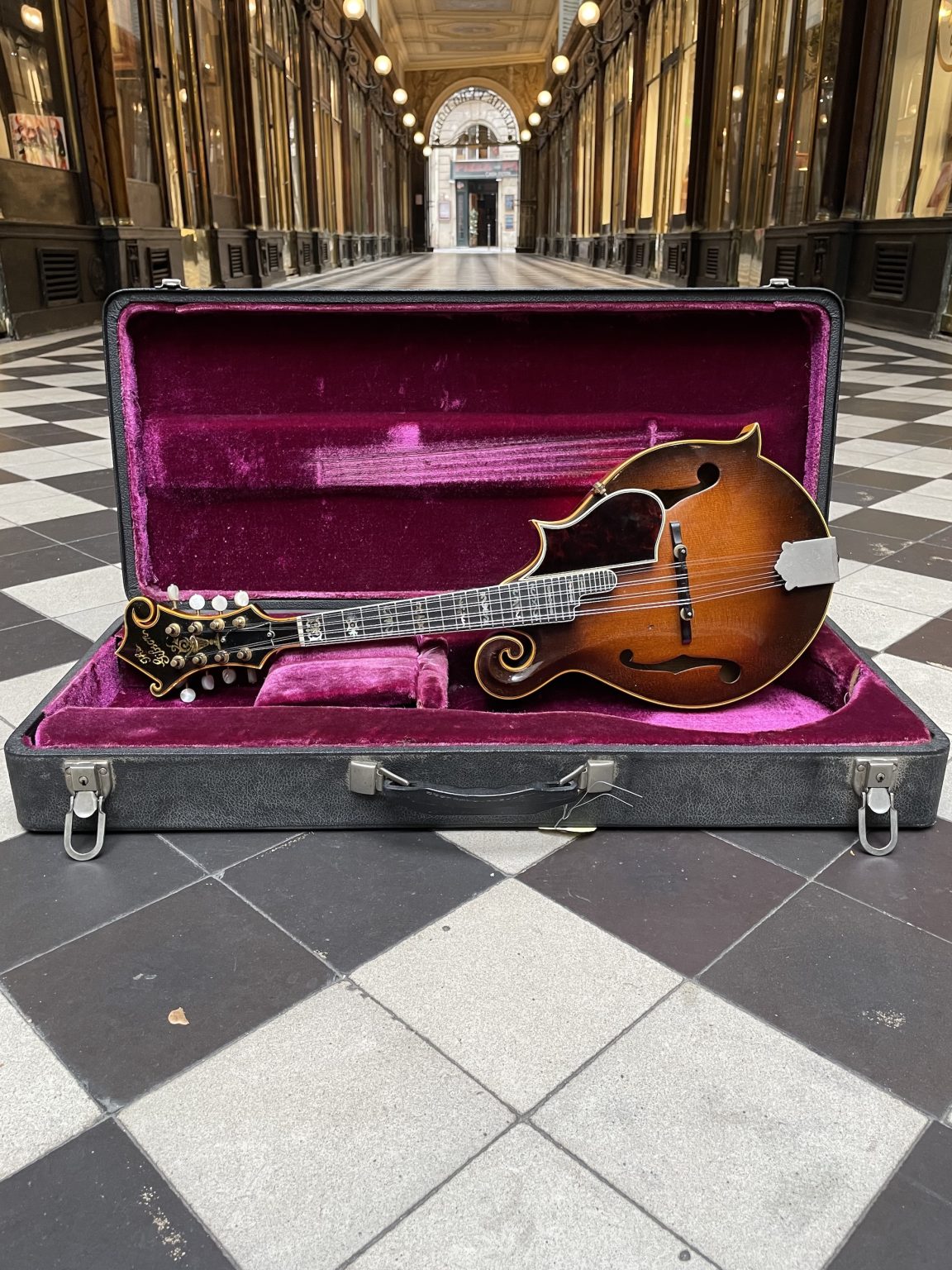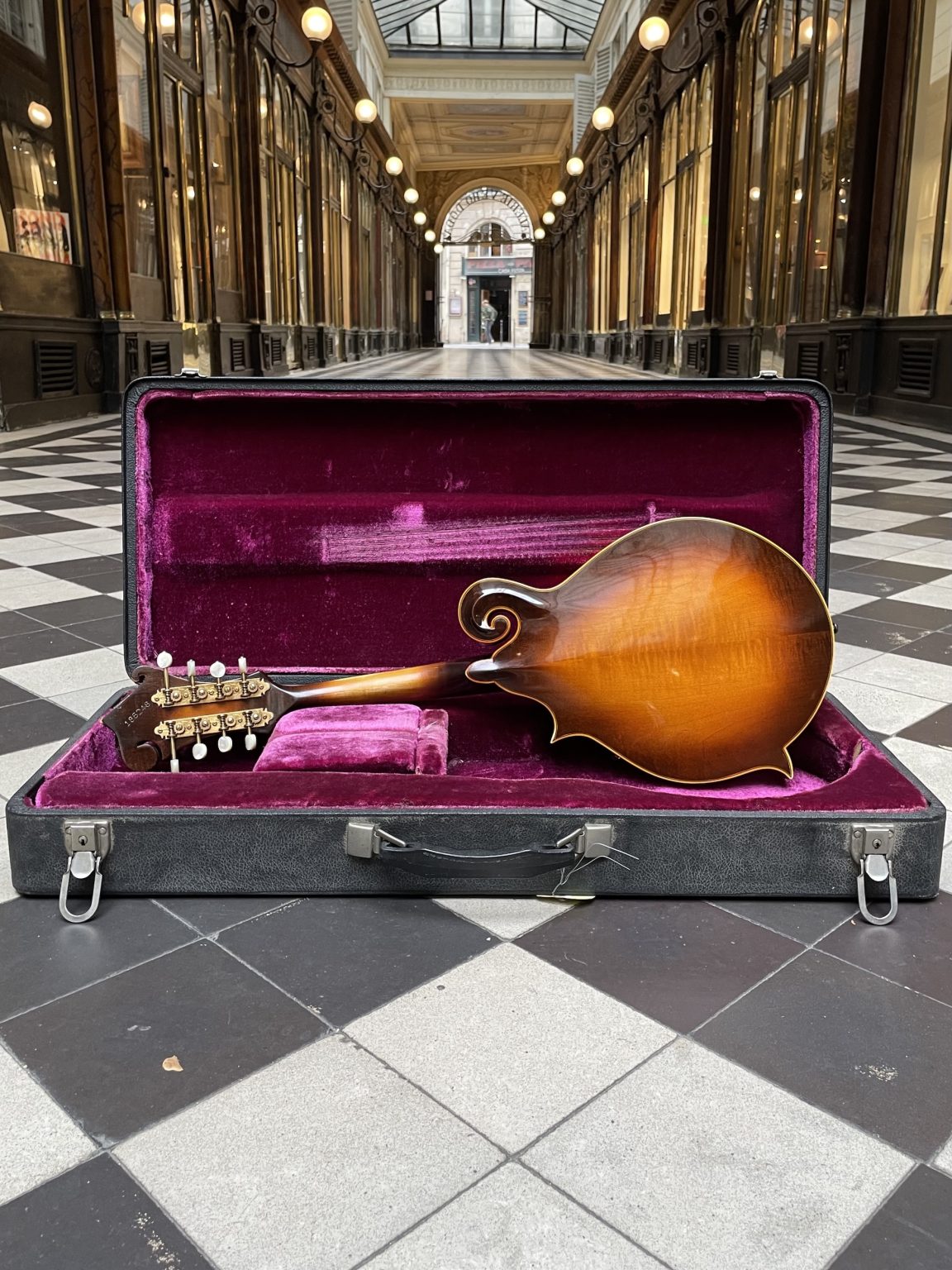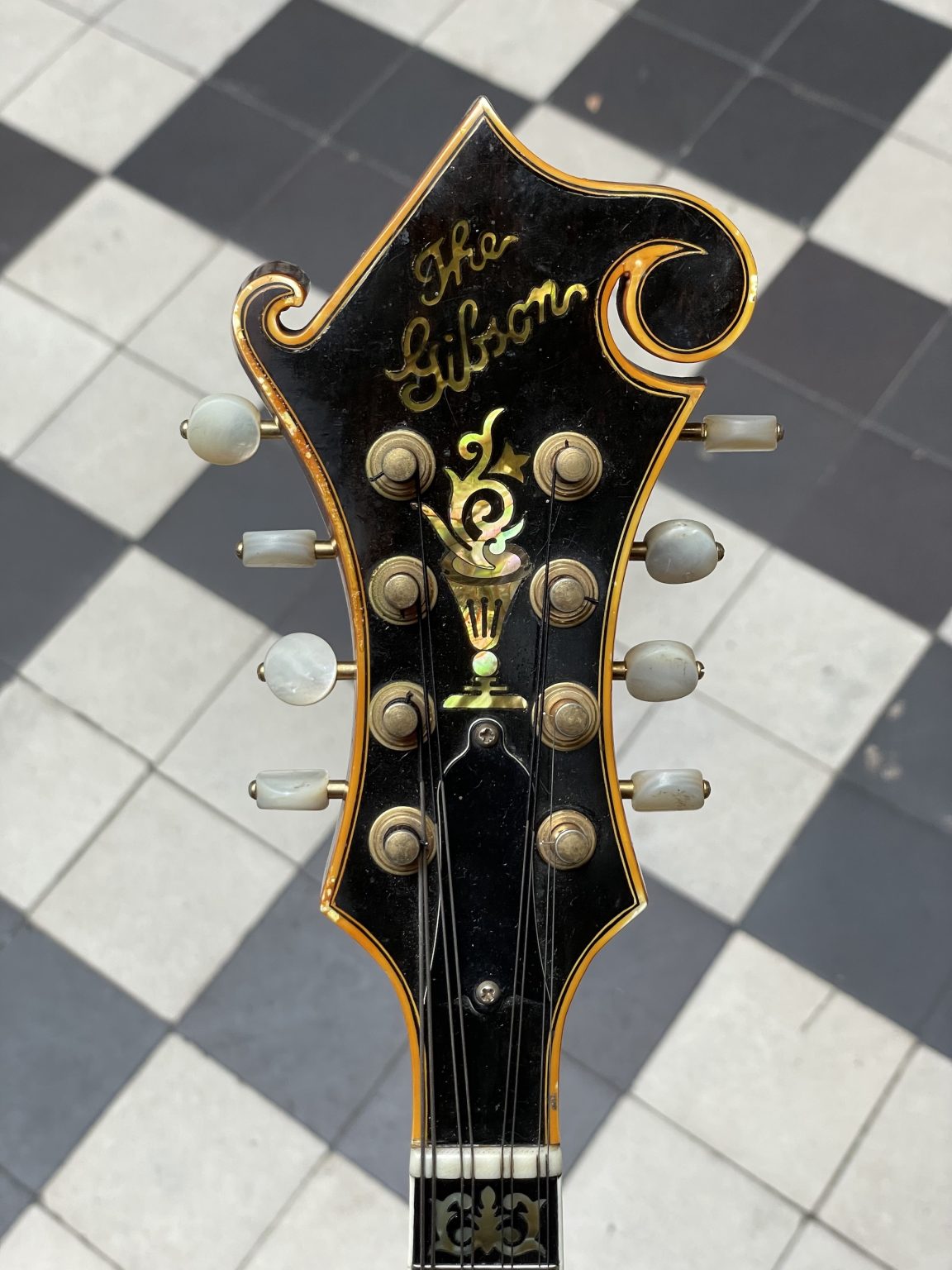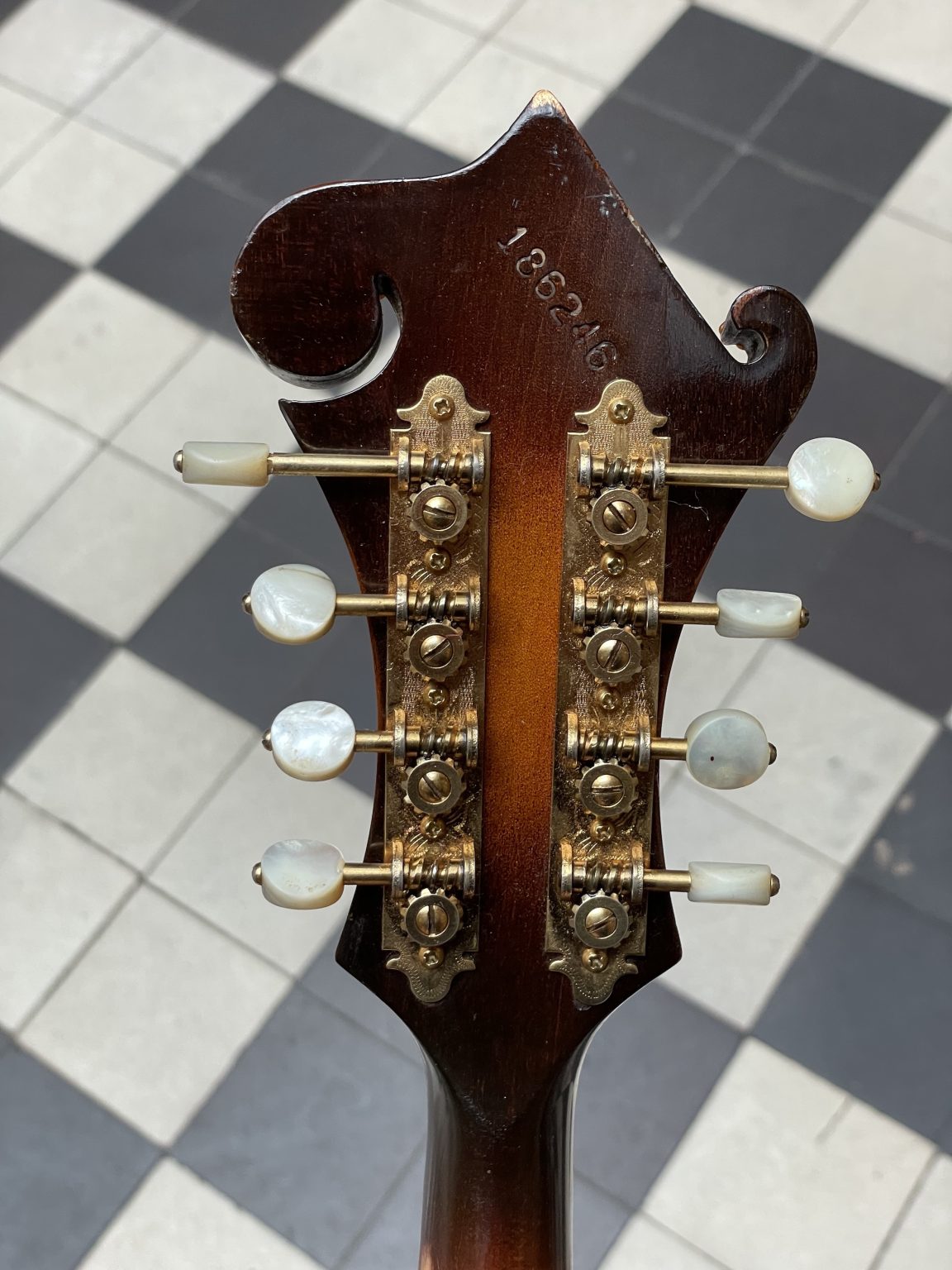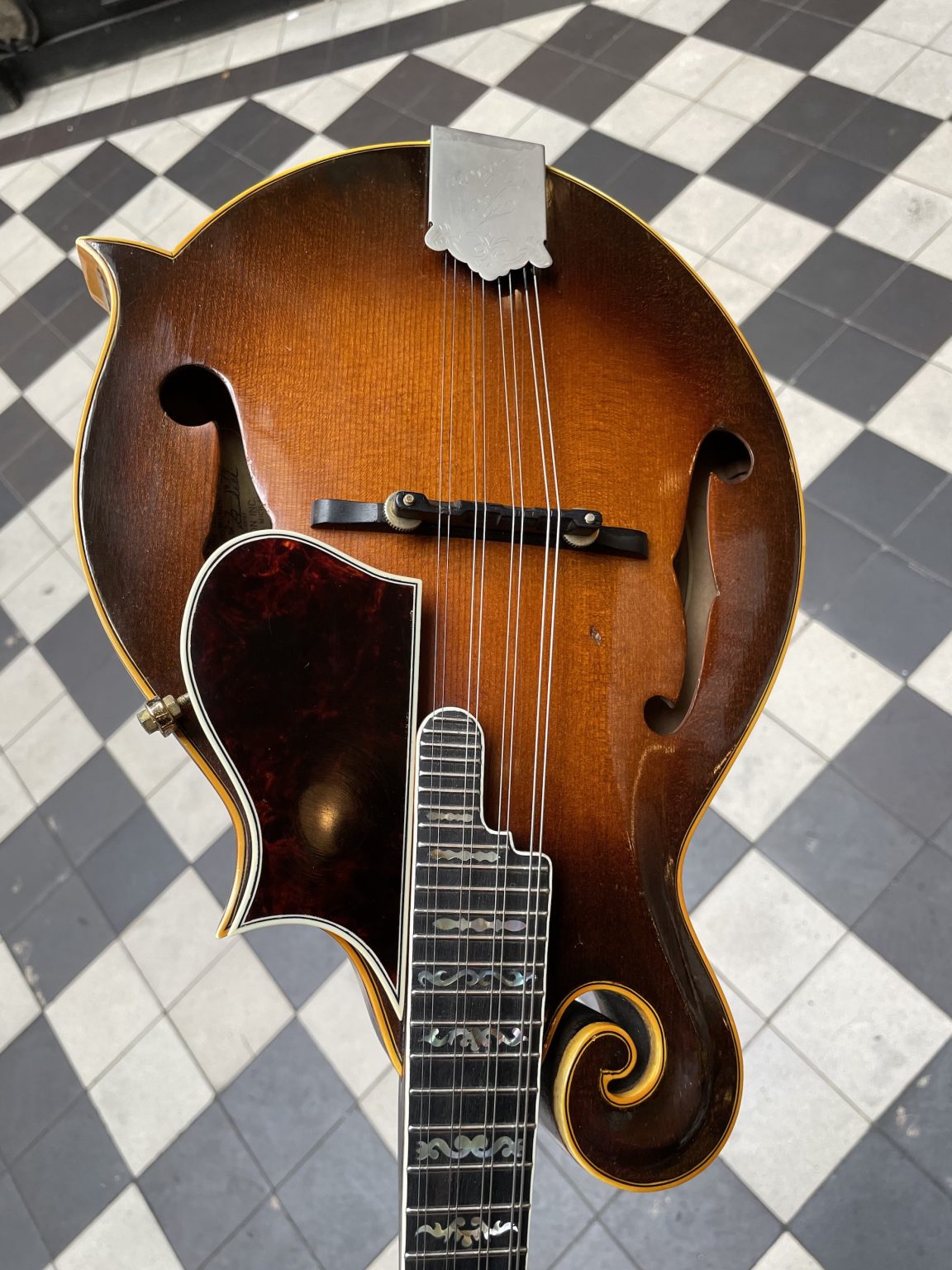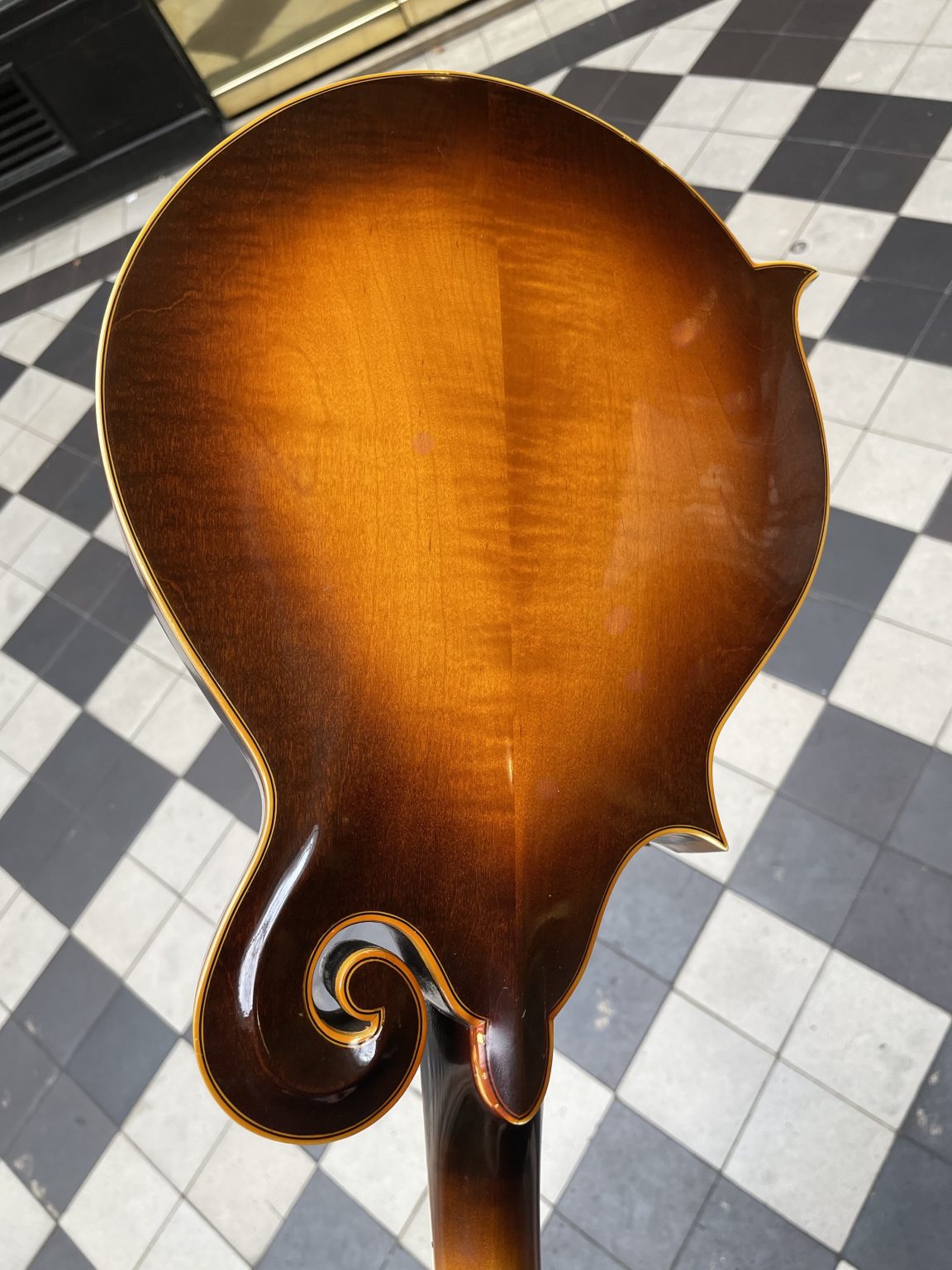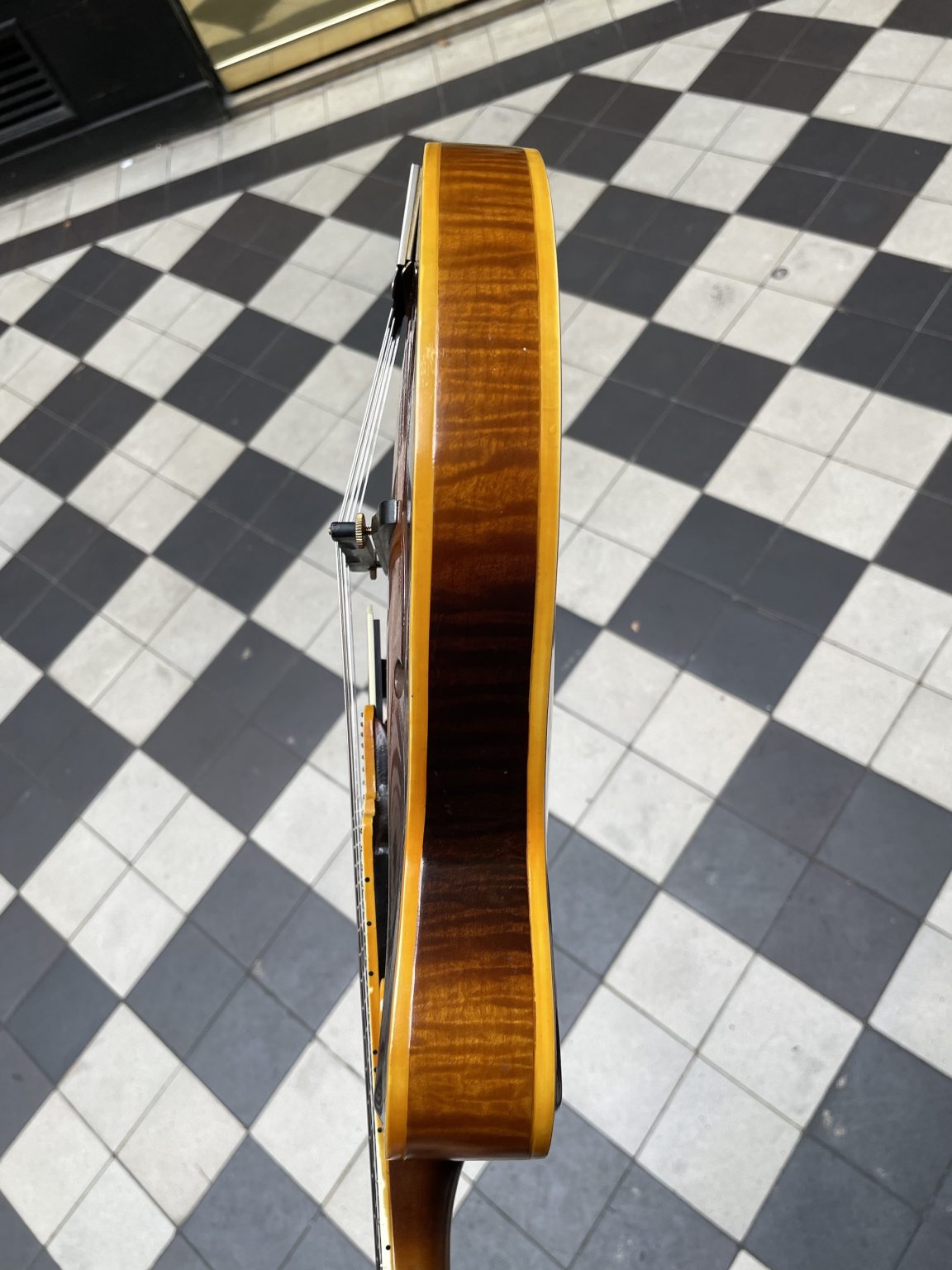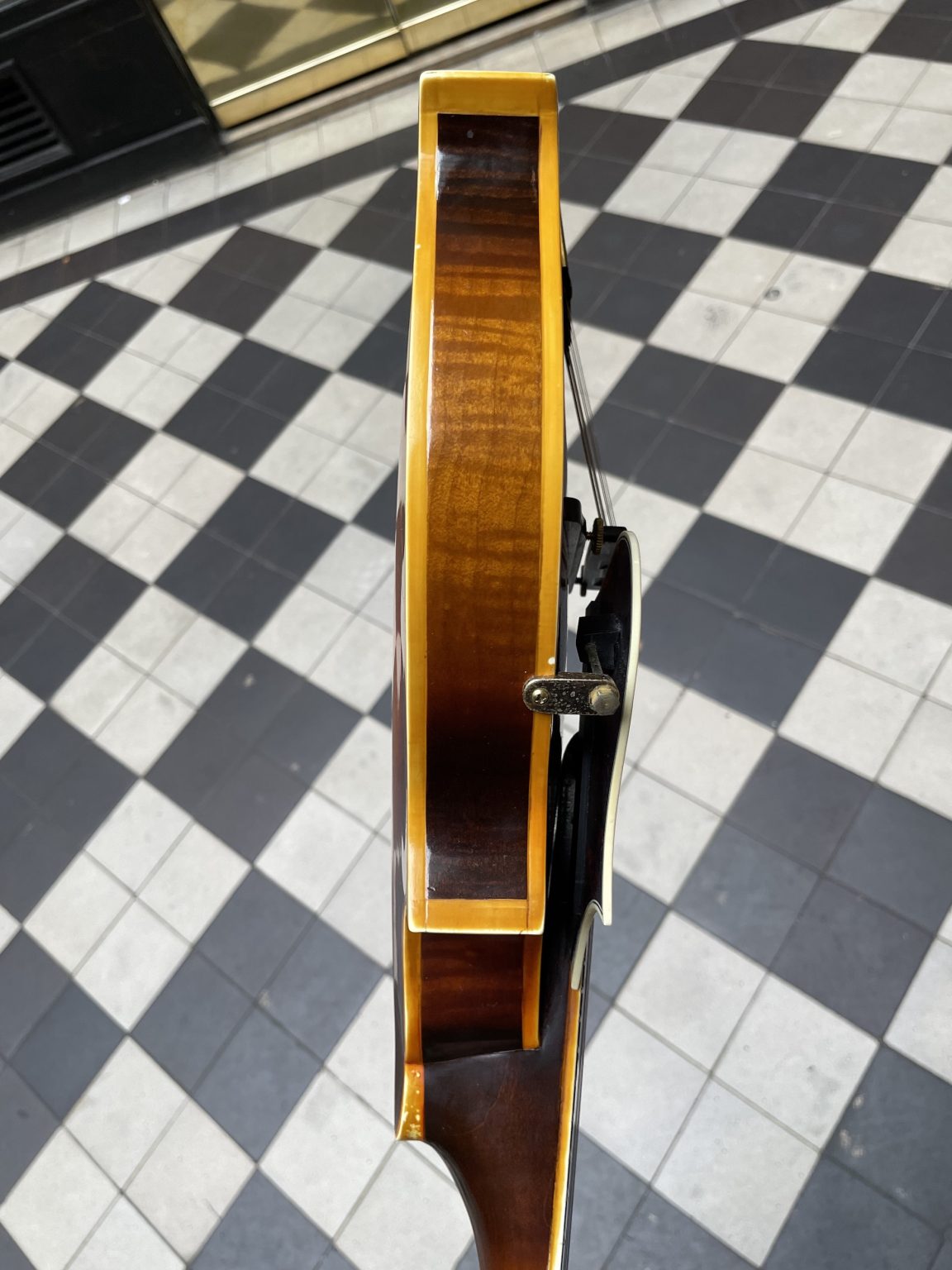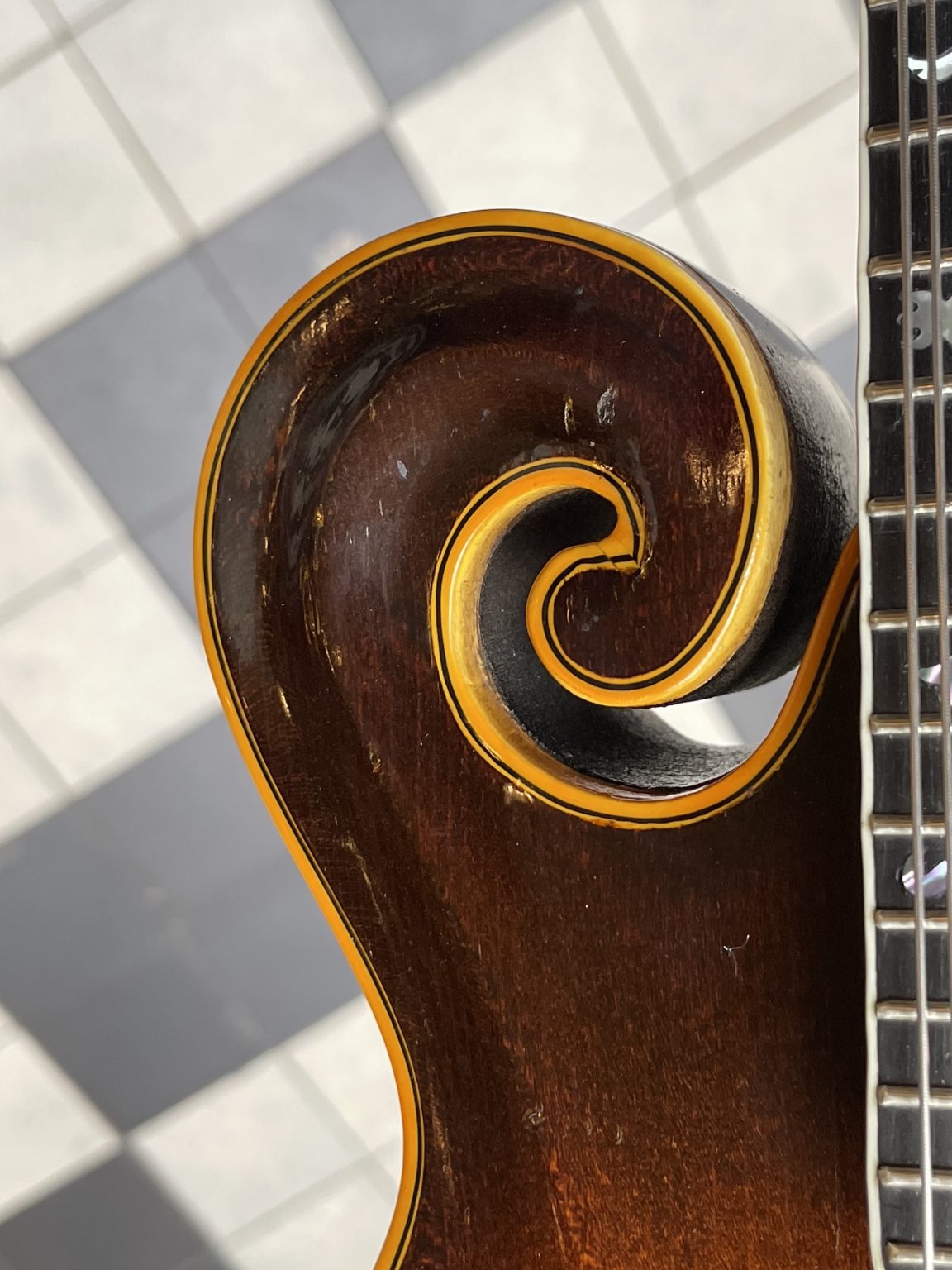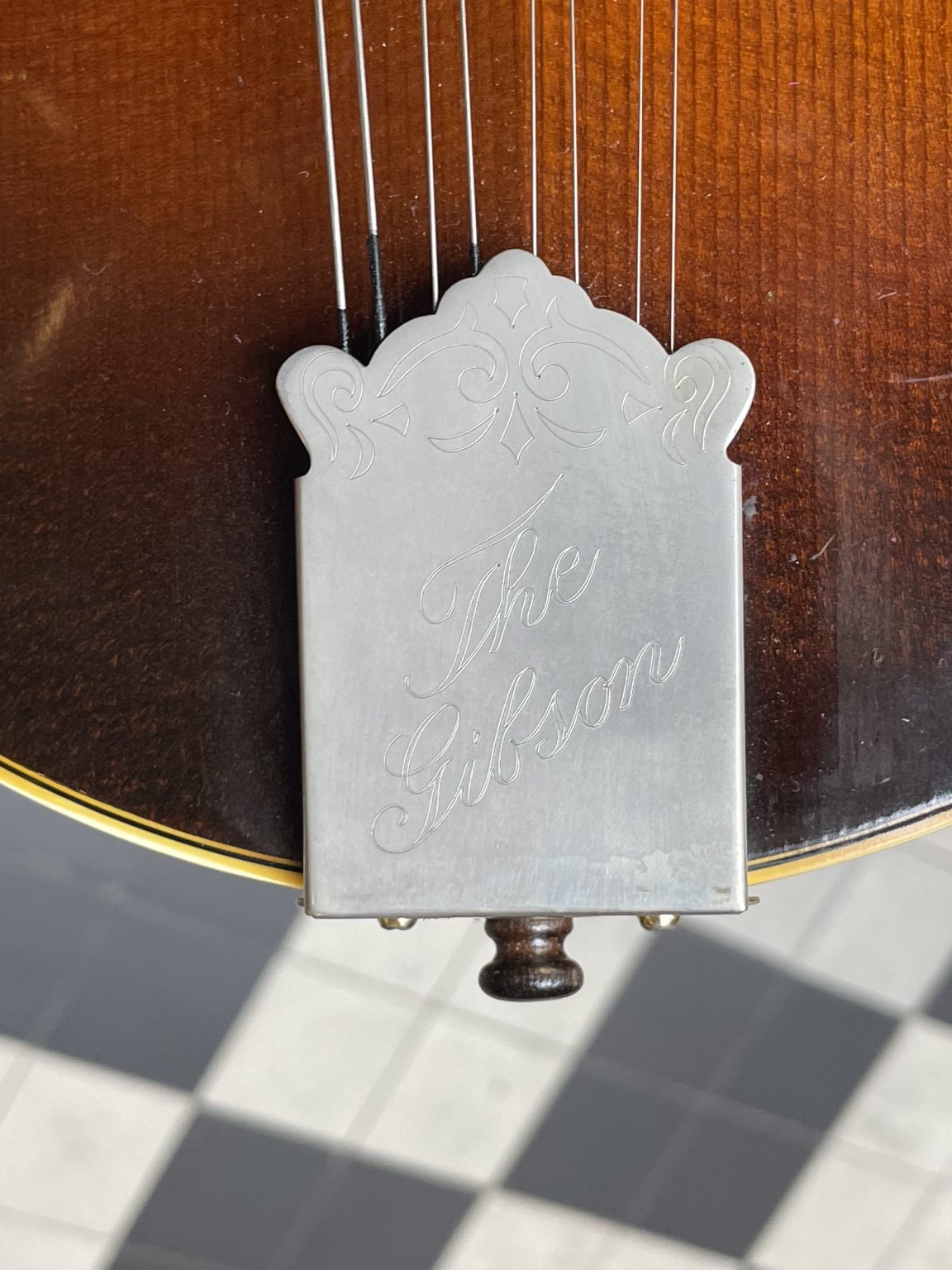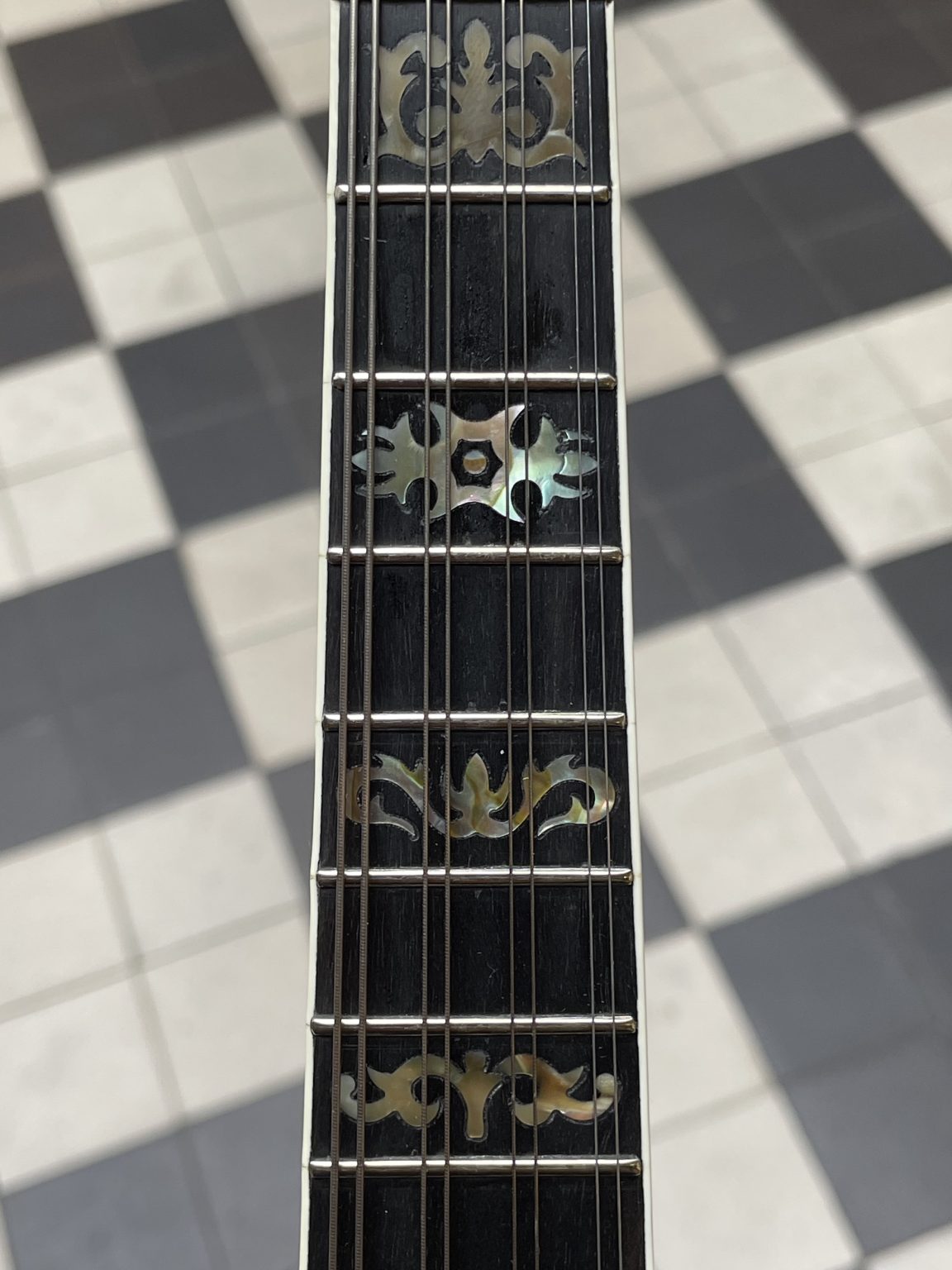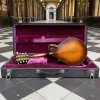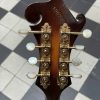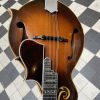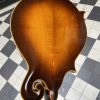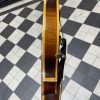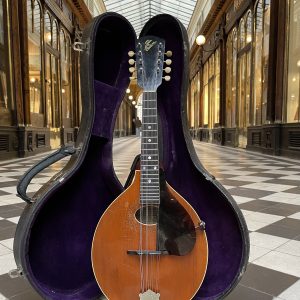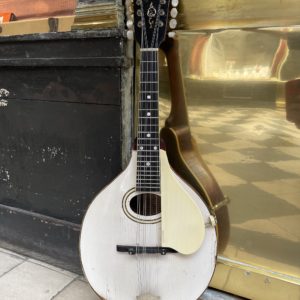1974 GIBSON STYLE F-5 MANDOLIN
€6.950,00
In stock
The prices indicated correspond to the price in the case of payment in-store or by bank transfer. In the case of payment by credit card via the website, a processing fee of [3.25% + €0.25]* will be applied to the total amount of the basket, including delivery costs.
Superb 1974 Gibson F-5 mandolin, in very good cosmetic and playable condition.
In the direct line of examples produced over the five decades preceding its construction, this F-5 appeared in the first half of the 1970s at the top of the range of acoustic mandolins produced in Kalamazoo. Introduced in 1922 under the direction of Lloyd Loar, this model was intended to become the Stradivari of mandolins, to quote the expression used by Gibson at the time. At the beginning of the 20th century, the company was primarily a mandolin manufacturer, and its ambition was to create an American equivalent to the traditional Italian quartet instruments: mandolin, mandola, mandocello, and mandobass were to replace their counterparts produced a few centuries earlier by the illustrious Cremonese luthiers.
Notwithstanding the rather immodest claims made by Gibson’s salespeople, it’s clear that the F-5 truly revolutionized the mandolin in several respects, and raised its prestige to the level it had previously held in Italian and French aristocratic circles—while its status in America had until then been essentially popular, originating from the Italian diaspora. It remains to this day one of the most demonstrative testimonies of a luthier’s craftsmanship due to the complexity of its construction—notably the carving of its top, with its scrolled shape on the bass side and the dots on the treble side, the ridge on the back of the body, and the delicate craftsmanship of the scroll on the headstock. These elements, it’s safe to say, make the F-5 the most iconic and reproduced of all 20th-century American mandolins.
Having been designed as a professional model, the fingerboard sports 21 frets with an extension under the treble strings going up to the 30th fret and allowing to play in an even higher range; the end of the fingerboard being raised in relation to the table, the break angle of the strings on the bridge is increased in proportion, boosting the sound power of the instrument; the body of the instrument, made entirely of carved solid wood (spruce for the soundboard and maple for the back and sides) and equipped with f-shaped sound holes like a violin, is designed in such a way as to be able to offer a rich and even tone from the lowest note to the highest. Gibson mandolins from the 70s are commonly criticized, especially compared to their equivalents from previous decades, but it is clear that the workmanship of this example leaves nothing to be desired compared to previous productions (except for one or two extra zeros in the price!): naturally, the construction uses top quality materials; we observe through the sound holes the finesse of the soundboard, revealing the mastery of the craftsman who hand-carved the parts constituting the instrument; the sound is crisp and sharp, balanced in all playing positions. An interesting point to note on the F-5s of this era is that we find for the first time since the pre-war period certain decorative attributes: the traditional The Gibson logo inlaid on the headstock above the flowerpot motif (initially the F-5 mandolin was adorned with a more elaborate fern pattern, the flowerpot is nevertheless one of the main visual markers of high-end Gibson models since it is notably used on the L-5 guitar), as well as the abalone fingerboard inlays with floral motifs. The rest of the hardware consists of a set of engraved and gold-plated tuners; a hidden tailpiece engraved with the name The Gibson (initially gold, the plating here has faded due to play wear); a tortoise plastic pickguard following the shape of the tip of the soundboard; an adjustable ebony bridge, inspired by the style of parts used since the 1920s.
The instrument remains in superb condition and has been recently tuned up for playing in our workshop: fret levelling / crowning / polishing, nut adjustment, and action and intonation adjustments allow this beautiful mandolin to function perfectly, with a low action and accurate intonation over the entire fingerboard.
Sold in its original rectangular plush-lined hardshell case.


